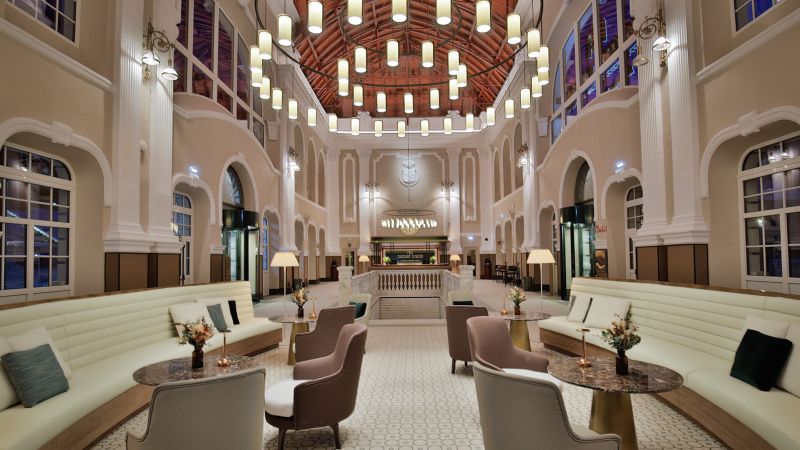
Editor’s Note: Sign up for Unlocking the World, CNN Travel’s weekly newsletter. Get news about destinations opening, inspiration for future adventures, plus the latest in aviation, food and drink, where to stay and other travel developments.
CNN
—
Against the backdrop of the snow-capped Pyrenees mountains, deep in the Aragon valley, lies an imposing, beautiful building. Welcome to Canfranc Station, once an abandoned railway station, now a luxurious hotel.
Canfranc Station opened as an opulent rail hub in 1928, with an inauguration ceremony attended by both the King of Spain and the President of the French Republic; the hotel’s situated in Spain, but not far from the French border.
During World War II, Canfranc witnessed arrests, espionage and gold trafficking. By 1970, the station had closed its doors.
The station lay dormant for decades until work began to transform the still beautiful, but long neglected, building into a hotel operated by the Barcelo Hotel Group. After years of regeneration, Canfranc Station welcomed its first guests in January 2023.
Railway and history buffs officially have a new destination on their bucket list, while Mayor of Canfranc Fernando Sánchez Morales says locals have greeted the opening “with enthusiasm.”
“We are very satisfied to have the station alive and bright again,” Sánchez Morales tells CNN Travel.
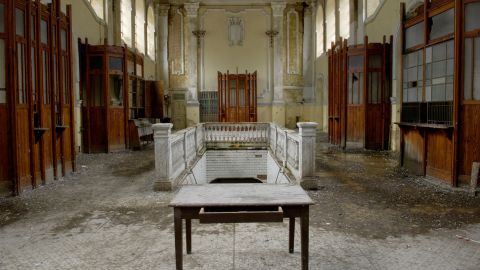
Even as a ruin, Canfranc attracted visitors: Photographers flocked to the station, designed by Spanish architect Fernando Ramirez de Dampierre, keen to capture a forgotten slice of European rail history.
Those who find beauty in abandoned buildings might suggest the hotel was more appealing in this eerie, dilapidated state.
But Canfranc Station also looks pretty spectacular post-revitalization, and is already attracting hotel guests.
Architect Thomas O’Hare first stumbled across Canfranc Station by accident a couple of years ago. When he discovered the abandoned rail hub was set to become a hotel, O’Hare vowed to return upon completion.
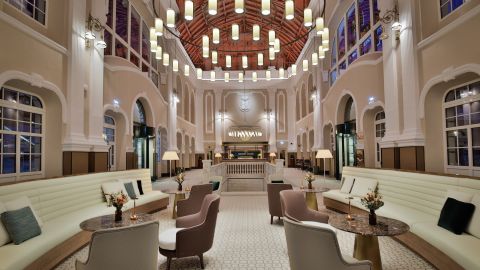
Today, O’Hare, who lives in Belfast in Northern Ireland, is on vacation at the hotel with his family.
“The exterior is very grand and certainly gives the impression of travel from a different time,” O’Hare tells CNN Travel.
The O’Hares are spending their days skiing in Candanchu, one of the oldest ski resorts in Spain, which neighbors the hotel.
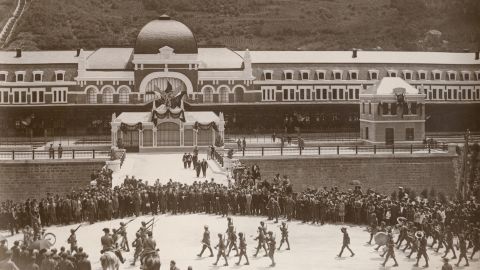
Due to its border position, ownership of Canfranc Station was originally shared between France and Spain. It’s now owned by the local Aragon government in Spain, who worked on the hotel regeneration process with the Barcelo Hotel Group.
Canfranc Station played an active role during World War II, bearing witness to moments of both hope and despair.
Prior to the Nazi takeover of the Canfranc municipality, the station acted as the gateway to liberty for some European Jews who were persecuted by the German regime.
Ramón Javier Campo Fraile, writer behind the project heraldo.es/canfranc, which won the Premio Nacional de Periodismo Digital journalism award in 2003, spoke to CNN Travel in 2017 about Canfranc’s history.
“In the first years of the world war, from 1940 to 1942, thousands of Jews fled by train from Canfranc to Lisbon and the United States,” he said.
Among those who fled by train out of Canfranc, according to Campo Fraile, were the painters Max Ernst, who was not Jewish, and Marc Chagall. American entertainer Josephine Baker also transited through the station.
Spies traveled by train from Canfranc en route to join the anti-Nazi French Resistance and to pass messages to Allied countries.
“It was also used by the Allies, who passed information to France and Spain through a spy network,” said Mayor Sánchez Morales in 2017.
However, the Nazis took the municipality of Canfranc in November 1942 and maintained control until June 1944.
Escape through Canfranc became harder and the station became the site of many arrests.
Canfranc was the only Spanish municipality occupied by the Nazis – and the regime made its presence felt. Campo Fraile said more than 300 people were arrested fleeing towards Lisbon in Portugal and sent to prisons across Spain.
“The Germans controlled the traffic of gold [and tungsten] and they also lowered the French flag.”
Rumors of Nazi gold trafficking through Canfranc station have proliferated for years, but they were only confirmed in 2000.
Campo Fraile told CNN Travel that a local bus driver found evidence revealing that “86 tons of Nazi gold passed through the station between 1942 and 1943.”
“We have found more documents in European and American archives that prove that more than 100 tons of gold passed through the area,” he said.
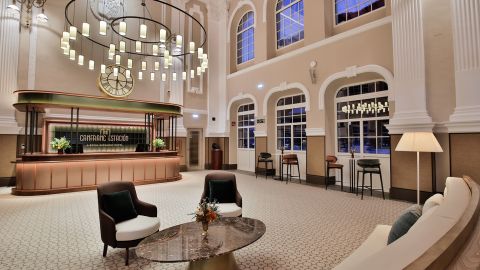
The new iteration of Canfranc Station aims to recognize and preserve the station’s history, while also commencing a new chapter for the station and the region.
María Bellosta, hotel manager at Canfranc, tells CNN Travel that “special attention has been paid to every detail” of the regeneration project.
It was important, Bellosta added, to avoid “losing an iota of its personality and enormous legacy.”
With this “enormous legacy” comes “an enormous challenge,” as Bellosta puts it.
The 1928 building had to be adapted to fit the standards and luxuries of a modern hotel, without losing its historical character.
“We wanted to maintain its DNA, its international railway spirit,” says Bellosta.
The hotel interior design, the product of Madrid-based design studio ILMIODESIGN, aims to evoke the 1920s through its fabric, decor and staff uniforms. The design also includes specific nods to what Bellosta calls “the historical, cultural and social heritage of Canfranc, and the role it developed during the 20th century.”
Colors and tones evoke the natural, mountainous landscape surrounding the hotel.
There are 104 rooms in the hotel, including four suites. There’s a wellness area, including a pool and three restaurants. What was once the station concourse is now the hotel reception.
Hotel guest Thomas O’Hare praises the “tasteful” transformation of the station concourse into the hotel reception.
“The rooms and bar and restaurant follow this nice feel of modern interior with a heavy gesture towards its history of rail travel,” he says.
O’Hare’s main quibble is the extra €15 cost per guest for using the hotel pool. Plus, Canfranc’s stunning mountainside location means it doesn’t have much in the way of grounds.
He also suggests the hotel could benefit from a display detailing the history of Canfranc Station, but adds that the staff are very knowledgeable on this subject.
When Canfranc was a ruin, it was a magnet for photographers both professional and amateur who wanted to capture the ambiance of the haunting ruin.
Bellosta suggests that post-regeneration these photographers “will not only have the privilege of immortalizing it with their cameras after the impressive restoration, but also of staying, enjoying a good meal.”
For his part, mayor Sánchez Morales says he’s “very happy” with how “the history of the station and the railway environment” are evoked throughout the hotel.
“We hope it will be the consolidation of Canfranc as a tourist destination,” he says.
CNN’s Rochelle Beighton contributed to this report
